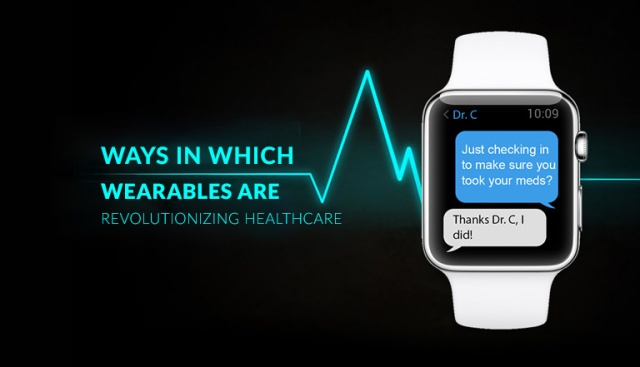
As technology is proliferating the healthcare industry, the standards of patient care have reached new heights. Patients are getting remote medical assistance from experts across the globe while booking appointments is just a matter of a few clicks. The connectivity between healthcare providers and patients is stronger than it was ever before. Technology also supports the research and development efforts, which has led to an increase in life expectancy all over the world. There is hardly a hospital or care center that has not invested in Healthcare App Development. Now after the mobility boom, the industry is geared up for the wearable revolution. Wearable devices such as Fitbit are already here and there is much more in store, for patients as well as providers. Let us see how these smart devices are revolutionizing the healthcare industry.
1. Enabling real-time monitoring
Wearable devices stay with the user all the time, which enables them to monitor the real-time health metrics and deliver alerts when they deviate from the normal levels. The growing popularity of Fitbit is an example of the way that wearables are becoming an essential tool for health-conscious people. Even those who are not sick are embracing the technology to stay fit and healthy.
2. Generating critical patient data
Not only do these devices monitor the fitness metrics, they also generate critical patient data for the ones who are away from the healthcare facilities. Patients who have been discharged from the hospital, the older patients and those taking palliative care at home can rely on this data. The devices issue alerts when they foresee a medical issue coming in the future on the basis of critical health metrics such as blood pressure, heart rhythm, pulse, and more.
3. Connecting electronic healthcare records
Investing in a well-designed wearable solution is a smart business decision for a healthcare organization as it drives connectivity in electronic healthcare records (EHR). Basically, EHR is the basis of a connected ecosystem that enables the physicians, nurses, and medical assistants to have a comprehensive picture of the patients. With the integration of wearable technology into the ecosystem, the providers are empowered to detect danger signals, predict negative events and provide help to the patients.
4. Driving patient-provider connectivity
Even though mobile apps have changed the connectivity scenario for the healthcare industry, wearables have taken it to the next level. Patients who use these devices are connected 24 by 7 with their doctors and they enable them to access their real-time parameters during remote consultations. Additionally, they facilitate the provision of emergency care at the patient’s doorstep when a negative event takes place.
5. Enhancing operational efficiency within organizations
Wearable device app development is a worthy investment for medical centers and hospitals as these enhance the operational efficiency within them. They can be used for tracking the workforce, devices, inventory, and equipment. Another application of wearables in hospital operations comes in the form of hand hygiene compliance, which plays a key role in ensuring cleanliness amongst the workforce.
Conclusion
Overall, healthcare is showing a great inclination towards smart technologies which are capable of easing disease detection, treatment, and prevention of diseases. With the unmatched benefits such as remote health monitoring, patient data collection, and enhanced patient care, the IoT and wearable technologies are poised to become the future of the industry. Providers can join hands with a professional app development company to avail the best technology solutions according to their needs. An expert can offer the right guidance and solution to help businesses deliver the highest standards of patient care.